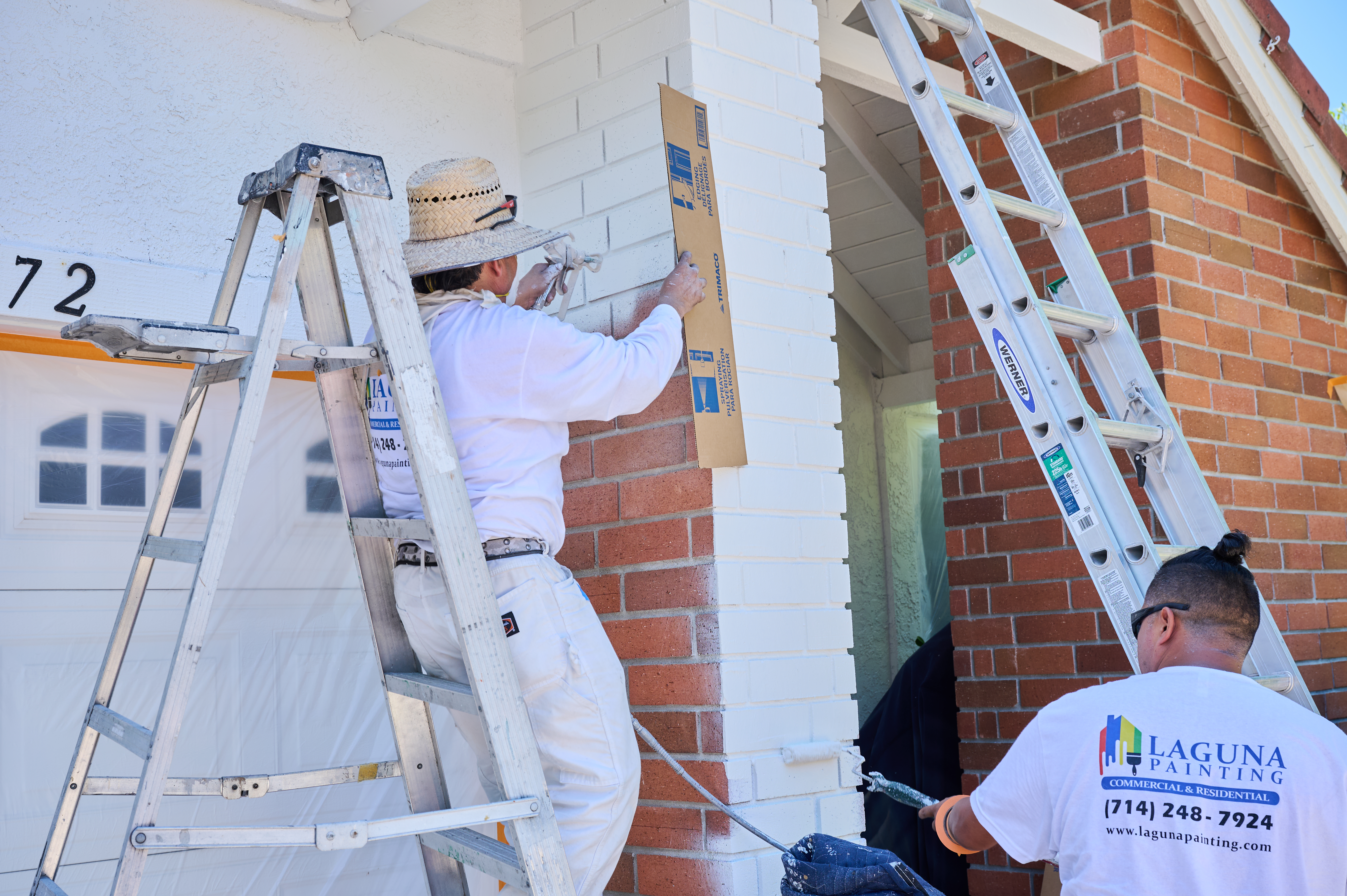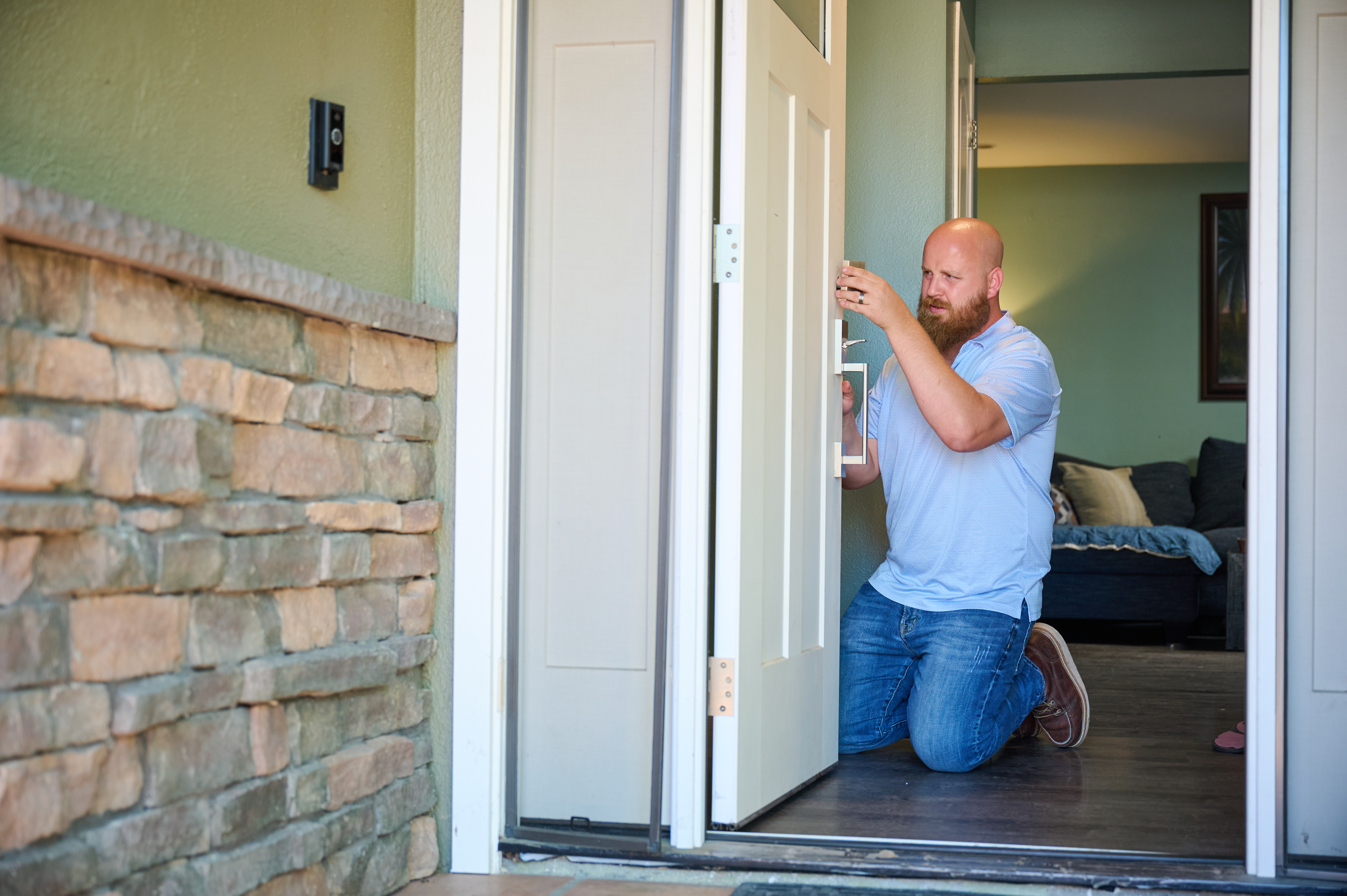
Sandblasting is a powerful method to remove paint, primer, and other coatings from hard surfaces. Learn the cost to rent a sandblaster and the factors involved.
Ditch the sand for superior surface prep


Sandblasting is effective, but it comes with safety and environmental concerns.
Homeowners should not attempt sandblasting without extensive experience and training.
Some alternatives are better for intricate work and are safe to DIY.
Sandblasting is ideal for heavy-duty applications like paint removal, rust cleaning, and surface preparation. However, it's not the best choice for tasks requiring a softer touch or for homeowners looking to save money with a DIY, not to mention this method's health and safety risks. Fortunately, several alternatives to sandblasting are effective for different needs.
Power or pressure washing uses high-pressure water to clean and remove surface contaminants. While it may not be as aggressive as sandblasting, power washing removes loose paint, dirt, mildew, and grime from various surfaces, including wood, concrete, and metal. It's a safer and more environmentally friendly option, as it doesn't produce dust or require abrasive materials. It can also be significantly cheaper than hiring a local sandblasting expert. The average cost to power wash your entire house is $310.
Speed and efficiency: Power washing is more efficient than sandblasting for cleaning and removing loose debris, dirt, and surface contaminants.
Less abrasive: Power washing uses pressurized water, which is less abrasive than sandblasting—it won't damage the substrate as easily, making it suitable for more delicate materials and surfaces.
Ease of use: Power washing equipment is relatively easy to operate and doesn't require specialized training or protective gear to the same extent as sandblasting.
Limited paint removal: While power washing can remove loose or peeling paint, sandblasting is more effective for completely stripping paint from surfaces, especially when dealing with multiple coats.
Surface texture: Power washing may not restore a smooth surface finish and can leave a slightly textured appearance on some materials.
Limited for rust and corrosion: Power washing is ineffective at removing heavy rust or deep-seated corrosion on metal surfaces, an area where sandblasting excels.
Chemical paint strippers dissolve and lift paint from surfaces. They come in various types, including liquid, gel, or paste, and you can apply them with brushes, rollers, or sprayers.
Chemical paint strippers work on all surfaces, including delicate ones with intricate details and areas where sandblasting might cause damage. However, paint strippers require careful handling and disposal due to their chemical nature.
Most interior painters bill between $20 and $50 per hour for services, including paint stripping. You can also try DIY paint stripping with materials purchased at your local hardware store for around $20. Afterward, follow local guidelines for the best ways to dispose of the stripper for local pickup or dropoff.
Less abrasive: Chemical paint strippers are non-abrasive and do not forcefully remove material from the substrate.
Efficiency: Chemical paint strippers can soften and loosen paint layers, making them relatively easy to scrape or peel off—especially useful for intricate or detailed surfaces.
Ease of use: Using chemical paint strippers requires less specialized equipment and training than sandblasting, so homeowners and DIY enthusiasts can save money.
Minimal dust: Chemical paint strippers do not generate dust or waste materials during the paint removal process, making them a cleaner option for waste management.
Chemical exposure: Chemical paint strippers contain hazardous materials that can harm humans without proper ventilation and protective gear.
Slower process: Paint removal with chemical strippers can be slower than sandblasting, as it often requires waiting for the stripper to work before scraping or rinsing.
Limited to certain coatings: The effectiveness of chemical paint strippers can depend on the type of paint, its age, and the number of layers—some coatings may be more resistant to chemical strippers, requiring multiple applications.
Residue and cleanup: After paint removal, residue from the chemical stripper may need to be thoroughly cleaned from the surface, which can be time-consuming and requires purchasing additional products.
Heat guns are handheld devices that produce hot air to soften and loosen paint, making it easier to scrape off with a putty knife or scraper. Heat guns are handy for smaller projects or precision work, such as removing paint from window frames, furniture, or moldings. They are a safer alternative to sandblasting and chemical strippers because they don't involve harsh chemicals or abrasive materials.
Some paint removal professionals employ low-temperature heat guns as a preliminary step to paint removal before resorting to scraping or wet sanding. Subsequently, they meticulously eliminate all remnants using a HEPA vacuum. The expenses associated with this method of lead paint removal vary from $8 to $17 per square foot, offering a long-lasting solution.
Non-abrasive: Heat strippers do not physically remove material from the substrate, making them suitable for materials that may be damaged by sandblasting.
Precise control: Heat guns allow for precise control over the area—you can accurately target specific spots or areas, which is helpful for detailed or intricate work.
Ease of use: Using heat strippers is straightforward and doesn't require the same specialized equipment and training as sandblasting. They are accessible to homeowners and DIY enthusiasts.
Minimal dust: Heat stripping does not generate dust or waste materials during the paint removal process, making it a cleaner option for waste management.
Slower process: Heat stripping can be slower than sandblasting, as it often involves softening the paint and manually scraping or peeling it off.
Multiple passes: In some cases, you may need to make numerous passes with a heat gun to remove paint layers, especially if dealing with various coats or stubborn coatings.
Surface damage: Heat strippers can overheat substrate and cause surface damage if not carefully used.

Hand and mechanical sanding are viable alternatives to sandblasting. This method involves using abrasive materials, such as sandpaper or powered sanding equipment, to gradually strip away layers of paint or corrosion from surfaces.
Hand sanding allows for greater control and precision, making it suitable for intricate or smaller areas where sandblasting might be too aggressive or impractical. Mechanical sanding tools can expedite the process for larger surfaces.
While sanding is more labor-intensive and time-consuming than sandblasting, it is an excellent choice for minimizing dust and environmental impact is essential. The cost to sand floors as a part of wood floor refinishing costs up to $3 per square foot. Professional sandblasting prices range from $1 to $5 per square foot, increasing prices depending on your required abrasive materials.
Controlled and precise: Sanding allows precise control over the removal process by targeting specific areas and adjusting the pressure and technique as needed.
Versatility: Sanding is appropriate for various surfaces, including wood, metal, plastic, and drywall.
Low initial cost: Sanding equipment is more accessible and less costly than sandblasting equipment, making it a practical choice for DIY projects.
Less cleanup: While sanding generates dust, it's less than sandblasting produces, and you won’t have to clean up the discarded blast materials.
Labor-intensive: Sanding is labor-intensive and time-consuming, especially for extensive projects.
Surface texture: Sanding can leave a textured surface finish, which may require additional steps to achieve a smooth surface for painting or finishing.
Risk of dust exposure: As with sandblasting, sanding generates dust, which can be harmful if inhaled.
This alternative is a non-abrasive surface cleaning and preparation technique that uses high-intensity laser beams to remove unwanted contaminants, coatings, rust, paint, and other surface impurities from various materials and substrates. The innovative technology relies on the principle of selective absorption of laser energy by the target material, which results in the rapid vaporization or sublimation of the undesired substances without causing damage to the underlying surface. Laser cleaning machines are expensive, starting at around $4,700.
Precision and efficiency: Laser cleaning offers exceptional control, allowing for the selective removal of contaminants, coatings, and rust without damaging the underlying substrate.
Environmentally friendly: Laser cleaning is eco-friendly and doesn't create harmful dust, waste materials, or airborne particles.
Minimal heat generation: Laser cleaning generates minimal heat, reducing the substrate's thermal damage risk.
Initial cost: Laser cleaning equipment can be expensive to purchase and maintain—your upfront investment may be higher than the cost of professional sandblasting.
Safety considerations: High-intensity laser beams can pose safety hazards, so DIYers must undergo proper training to use this equipment.
Surface texture: Laser cleaning may not restore a smooth surface finish, and it can sometimes leave a slightly different texture or residue that requires additional cleaning.
From average costs to expert advice, get all the answers you need to get your job done.

Sandblasting is a powerful method to remove paint, primer, and other coatings from hard surfaces. Learn the cost to rent a sandblaster and the factors involved.

Do you want the color of your exterior doors to really pop? Learn about the labor cost to paint the front door, back door, and other entranceways.

Painting a brick house typically costs between $1.40 and $4.20 per square foot. Your total cost will depend on where you live and the finish you use.

You choose it to withstand the elements, but can you paint a vinyl fence? The answer is yes, but it might not be the best when your fence shows wear and tear.

Whether you opt for low-luster or high-gloss depends on budget, skill, aesthetics, and material. Learn how to pick the best sheen for exterior paint projects.

Painting your front door involves proper preparation, primer, and several coats of paint. Here's everything you need to know about how to paint a front door.